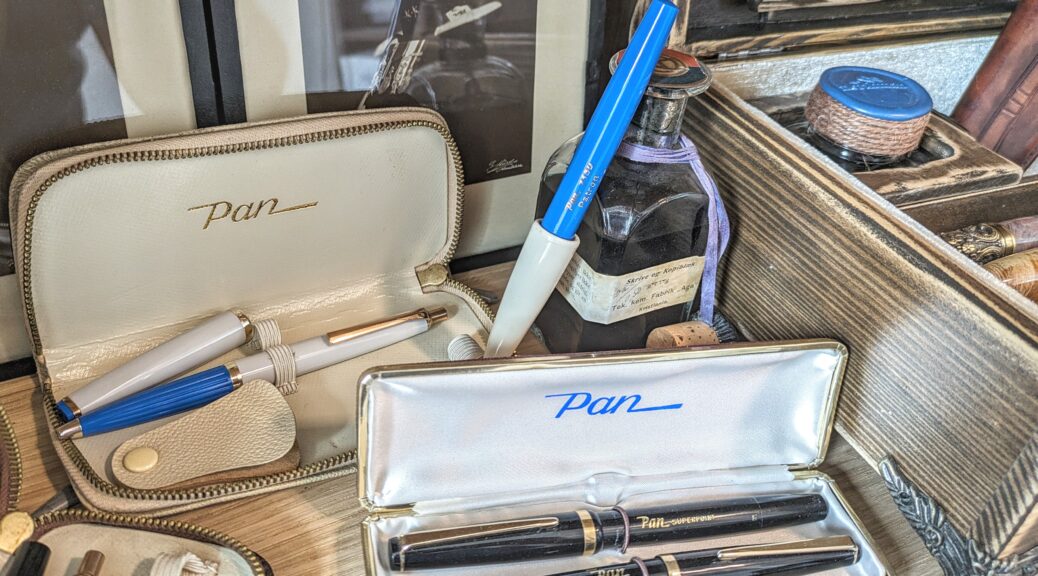
Nibby Sunday – State of my collection – April 2024
It’s been a while since I last wrote a post where I went through my whole pen collection, and I figured it might be time for a little update. So here are some numbers, and a rough overview of fountain pens, inks and other relevant things in my collection.
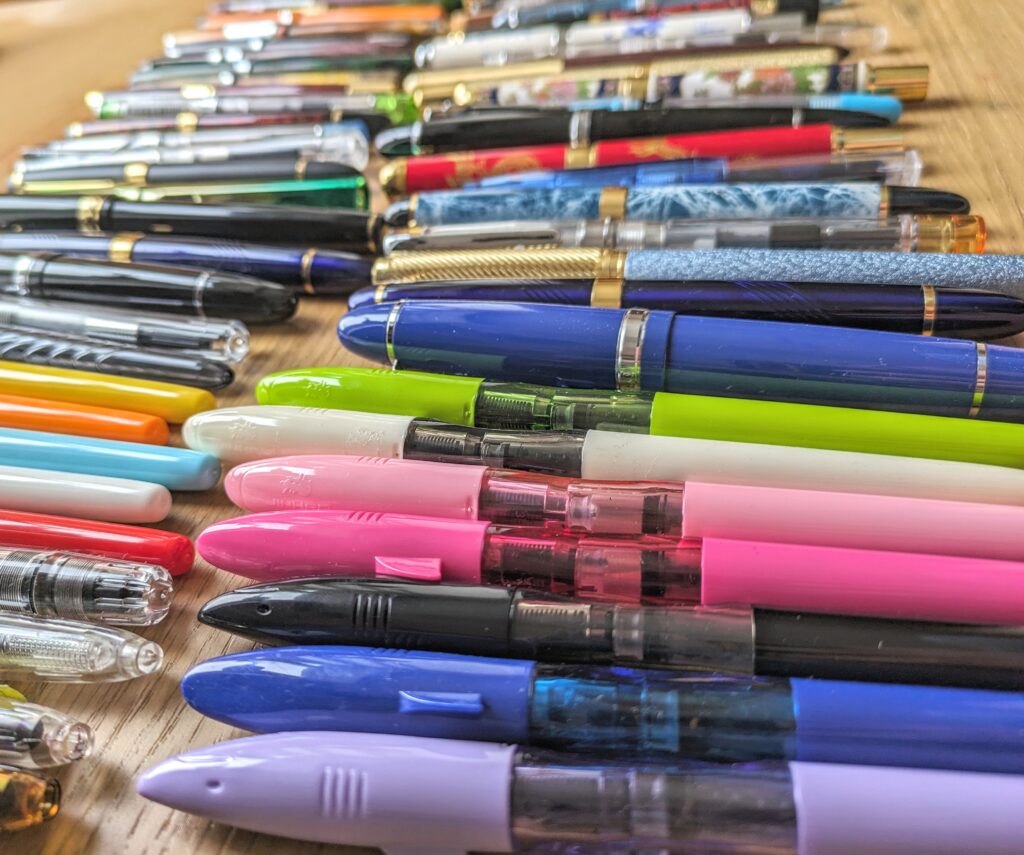
To do the inks first: I currently have 228 bottles of ink. This includes 100 small bottles (30 ml) of standard Diamine ink. I also have an almost complete collection of Pilot Iroshizuku. I have 32 of these. These are all the 24 original inks plus the seven anniversary inks, and one of the three new ones that came out a couple of years ago. So I’m missing two of the new ones, but I don’t really like them, so I’ve decided to not get them. I’m trying to get rid of the completion need I’ve struggled with in certain areas, and I’ve reached a point where I think I’m okay with missing two of these inks.
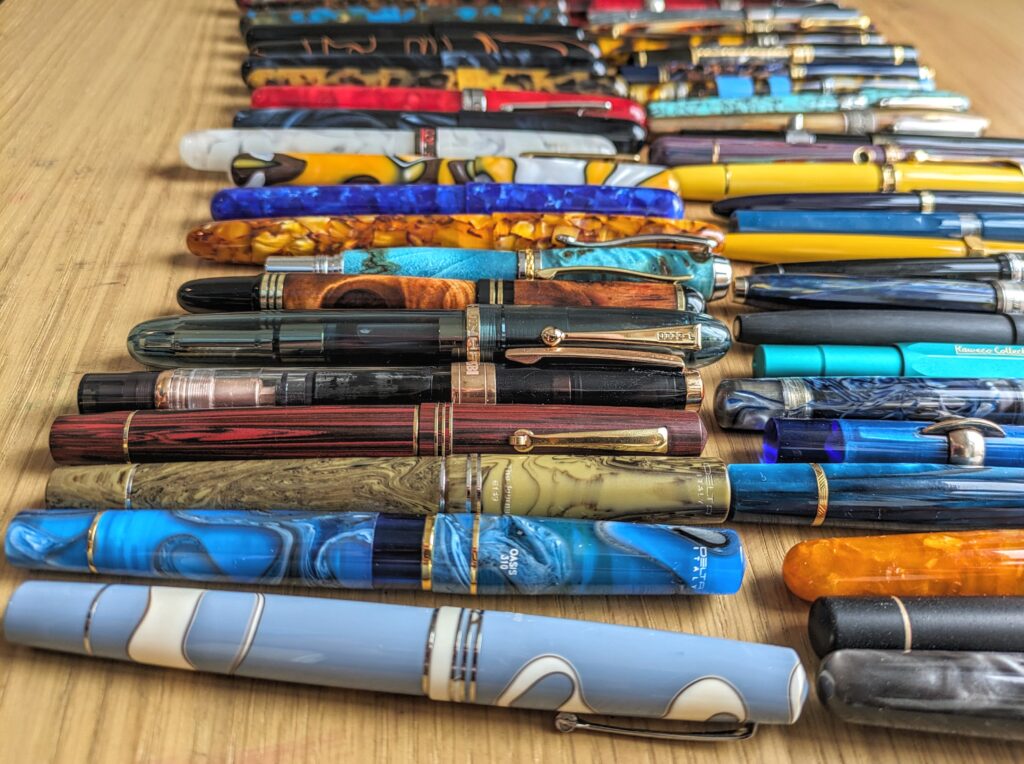
When I add up all my fountain pens I come to approx. 200 pens. Some of them are not really in writable condition, but I definitely have 150 pens that actually work as they should. I like to divide my fountain pen collection into three parts: Norwegian-made pens, cheapo pens and pens for daily use. In some cases there is some overlap between the three categories. I have several Norwegian-made pens that I definitely use for writing now and then, and the same can be said about the cheap pens, so this is pretty roughly distributed, but I have tried not to count any of my pens more times than one in the following overview.
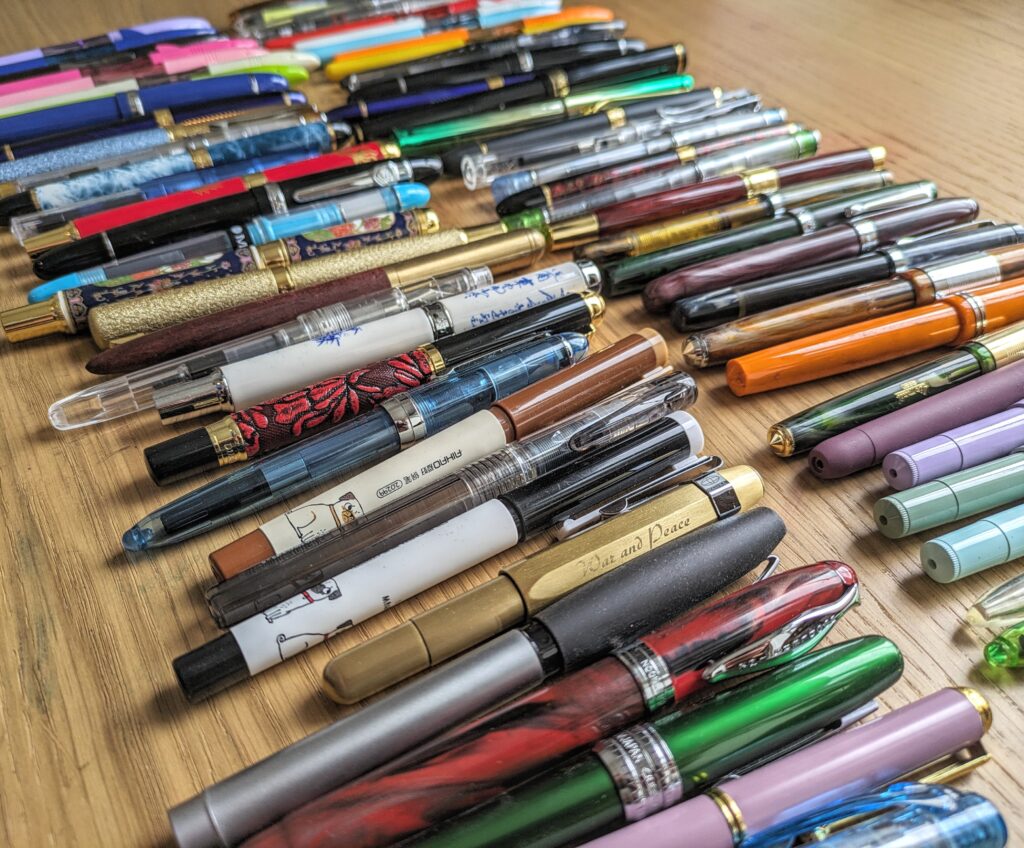
I have a total of 67 fountain pens that are part of the cheapo pen category. 46 of these have been purchased from China. Among the others, there are quite a few Indian pens (Noodlers, FPR etc.), and pens I have found in Norwegian discount stores (e.g. Søstrene Grene and TGR). The latter is probably also produced in China, I reckon. I also have some typical starter pens in this category, such as Platinum Preppy and Pilot Plumix. The reason I separate these pens into a separate category is that I almost never use them. They were bought in part when I was completely new to the hobby, out of sheer curiosity, simply because they were cheap, or in connection with very specific posts I wanted to write on the blog. Some of them were also gifts. I sometimes use these pens for experimentation, but they are definitely not in daily use.
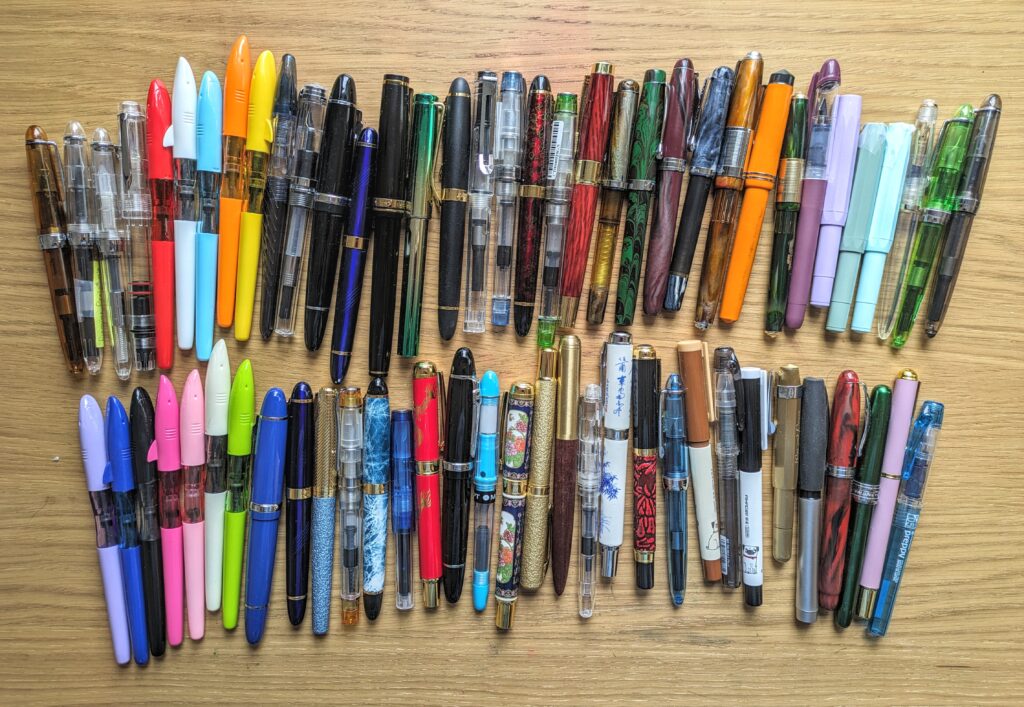
The daily use pens are the part of the collection that I use regularly. It is mostly modern pens. I have 60 pens that fall into this category. 3 of these are broken or in other ways unusable (and a couple more are on the verge of broken), and 8 of them are vintage pens. The rest are modern fountain pens, and more or less regularly in rotation.
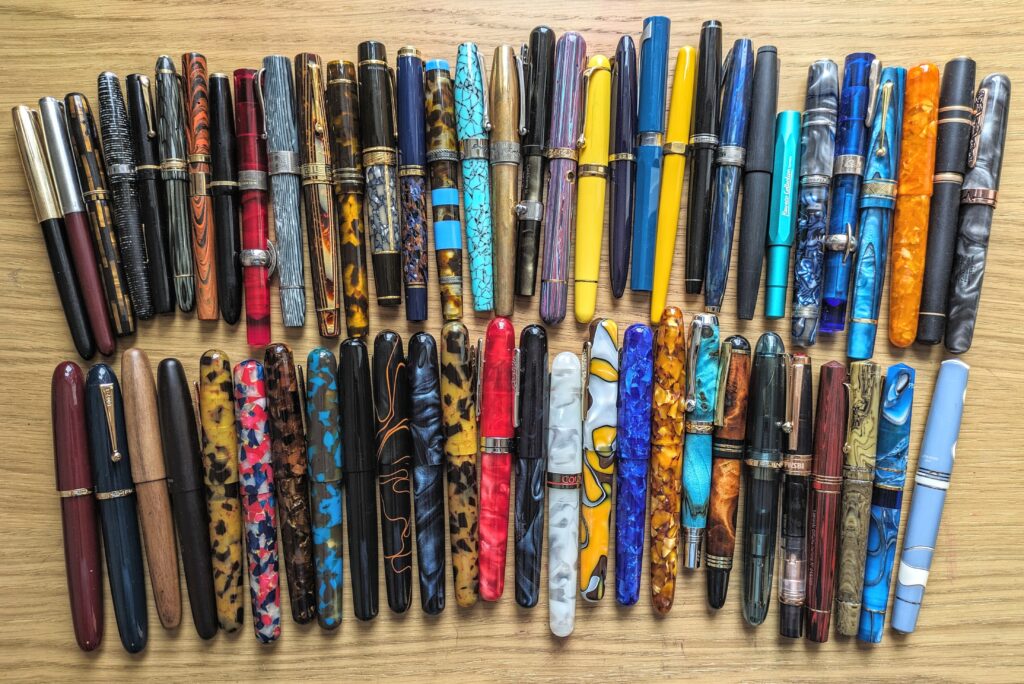
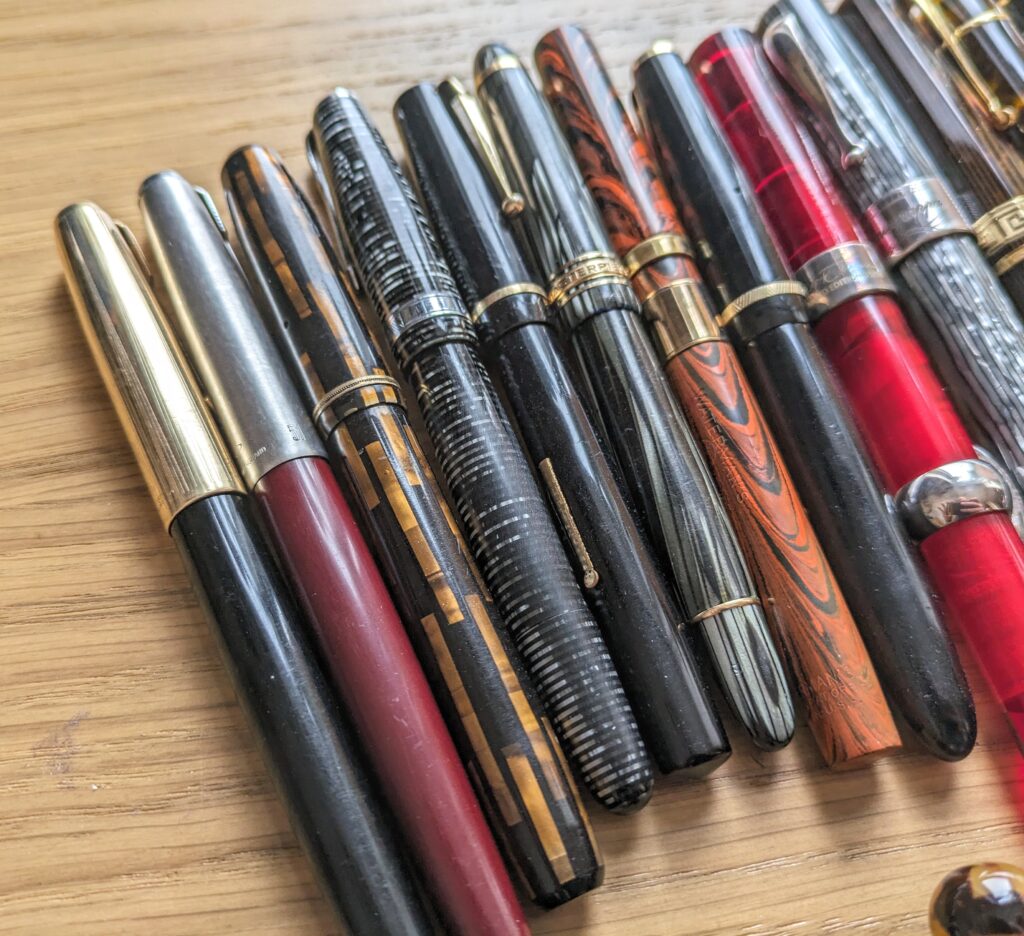
I also have a few more vintage pens in very varying condition. Some of them write, but they are neither good to write with, nor particularly reliable, so I don’t use them, other than to test various repair procedures. It is a bit difficult to come up with a number on these pens. How much of a pen must be missing/broken for it to no longer be considered “a pen” in the collection? I have about 20 such pens that are either fairly repaired, or at least complete enough that it would have been possible to repair them. But most of them are unknown brands, or at least of relatively low quality, and not necessarily something I feel is worth spending time and money on restoring to working order.
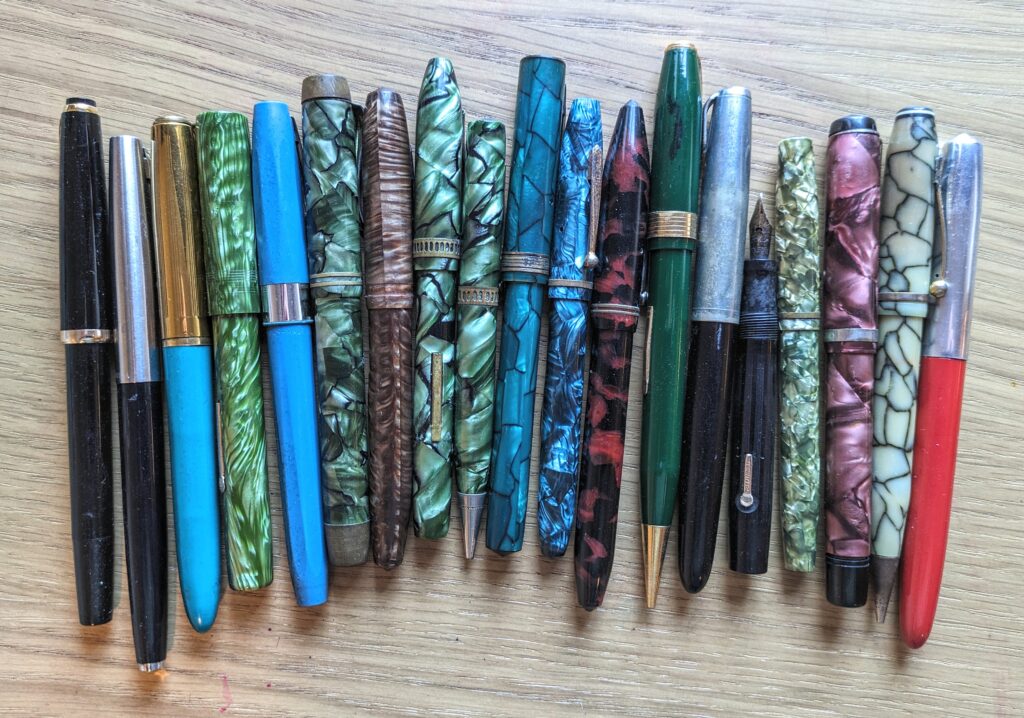
I also have a box of more fragmented individual parts and pens that there really is no more hope for.

Finally, we come to what I like to call my actual collection, namely the Norwegian-made writing equipment. These are mostly old pens in varying condition, and which I primarily have as collectibles. I don’t really consider my daily use pens a collection. The way I see it, a collection is a larger, curated unit of items. The value of the collection is greater than the sum of each part. My other pens are utility items. Yes, many of them are exclusive, expensive and rare, but the main point of having them is that I enjoy writing with them. They can be compared to coffee cups or t-shirts. I have a lot of those too, but they weren’t bought to be part of a larger unit, and I don’t consider them collections.
But my Norwegian-made writing implements are a proper collection, and something I am constantly working on developing further. I always have my eyes and ears open for new items I can add to this collection.
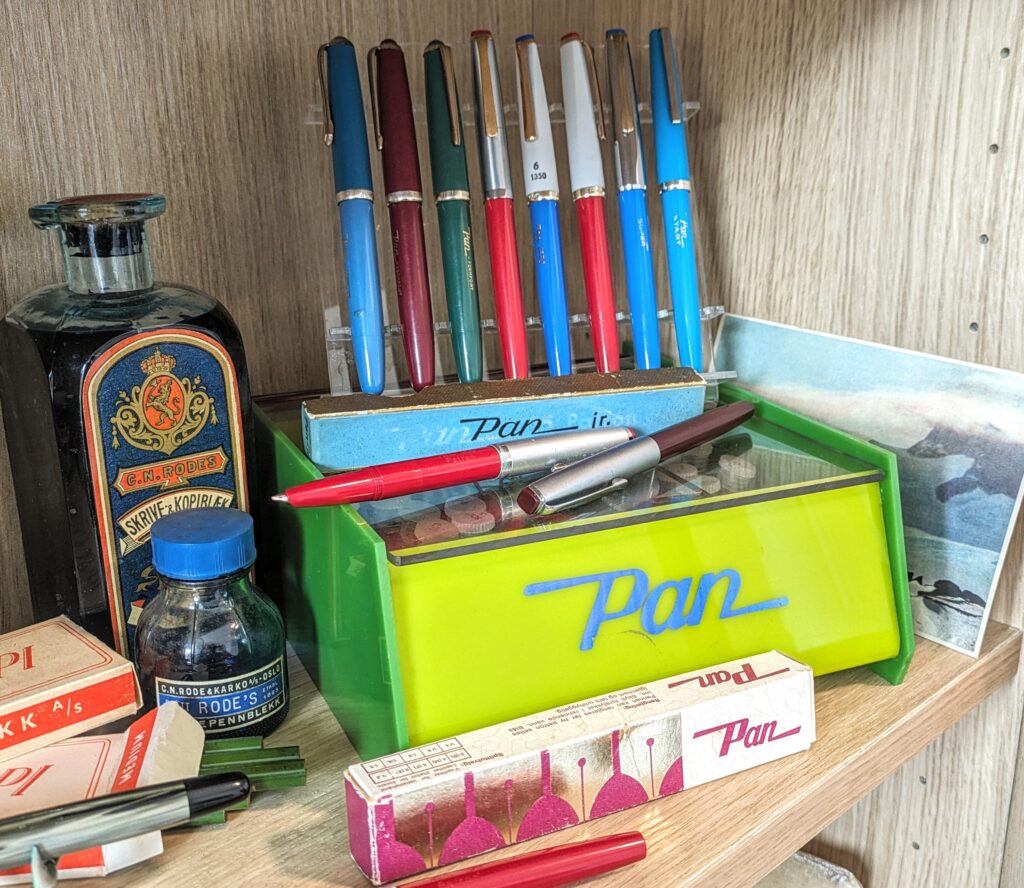
I would estimate that about half of the Norwegian pens are fully usable, and now and then I’ll fill some of them and write with them, but mostly, they are part of what I in many ways regard as my own micro-museum of the Norwegian industry for writing implements.
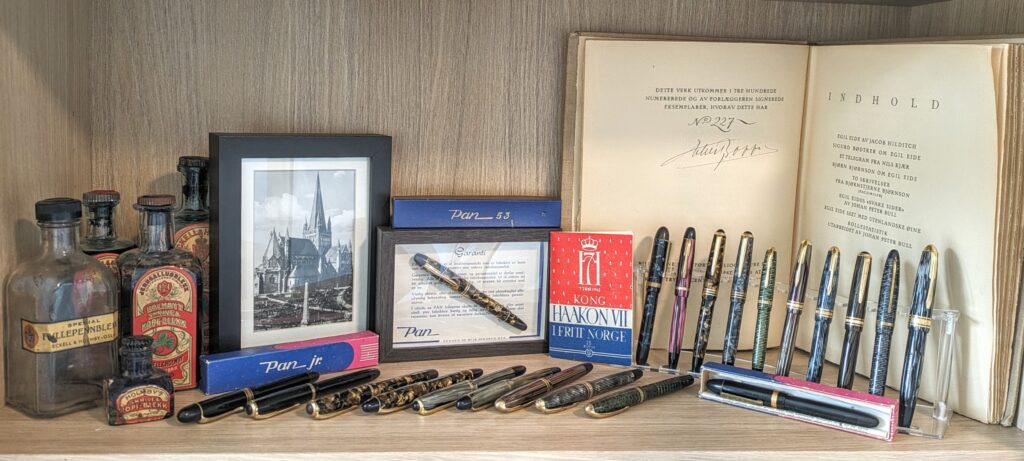
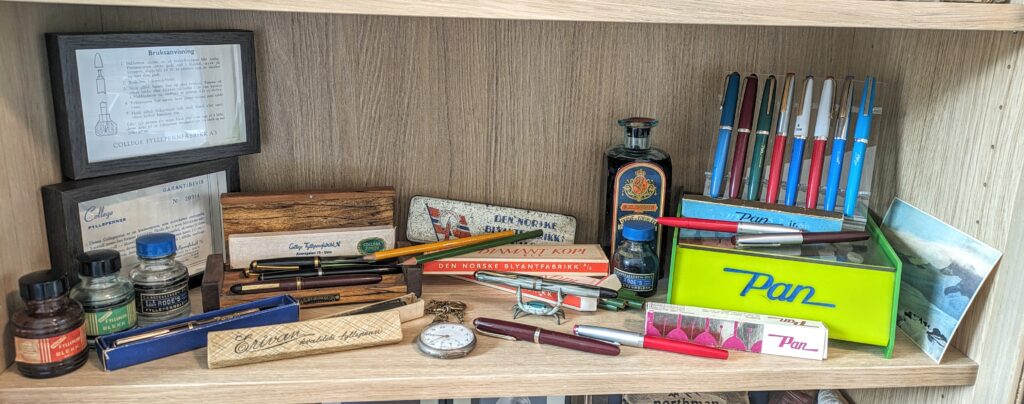
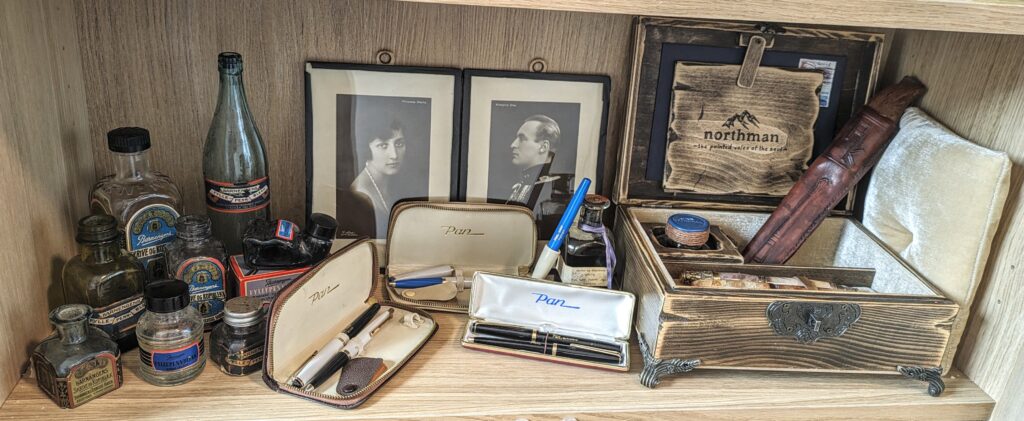
Here I have 49 more or less complete Pan pens (plus some individual parts, 4 pens from Dorn/College, 3 from Northman and 1 from Brage Rygh. The last four are modern, handmade wooden pens. I also have a pen from “Erivan”, which I haven’t been able to find any information about. There is Norwegian writing on both the box and in the accompanying user manual, but of course the pen could have been made abroad, and imported via a Norwegian distributor. As long as the box and the manual has Norwegian text, I feel anyway that it has a place in my Norwegian collection.
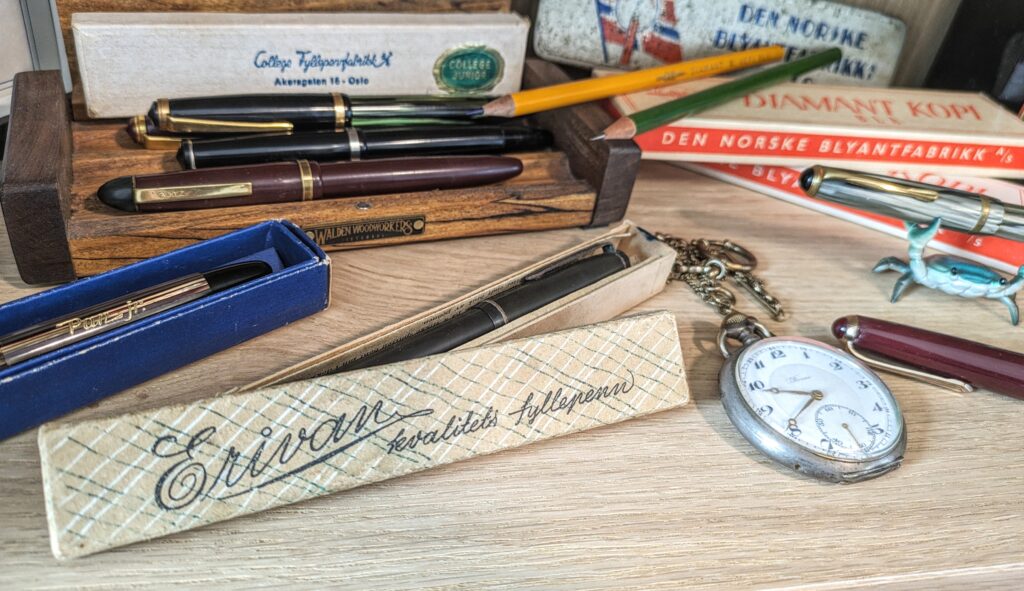
I have 19 vintage ink bottles. 5 of these still have ink in them, and 2 of them are unopened/sealed. The last two are both over a hundred years old, and in excellent condition.
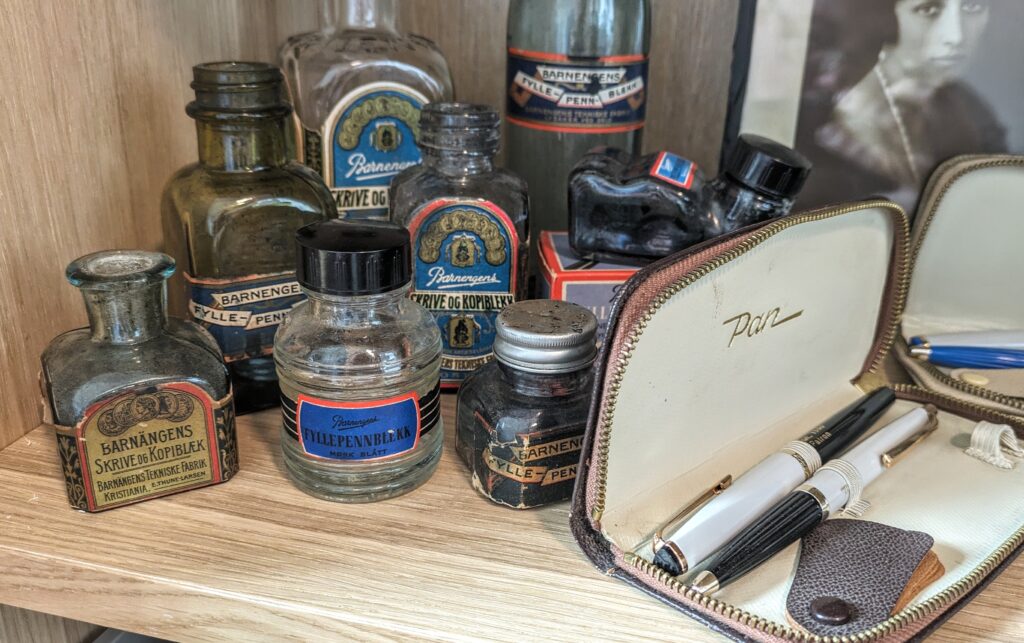
A couple of my ink bottles were bought this Easter and I have made an interesting observation. I have three identical bottles from three different ink manufacturers. This suggests that they bought their bottles from the same bottle-making factory. There probably weren’t that many manufacturers of small glass bottles in Norway, but there was a lot of chemical factories that also made inks, so it probably shouldn’t come as a surprise that some of them had to use the same bottles.
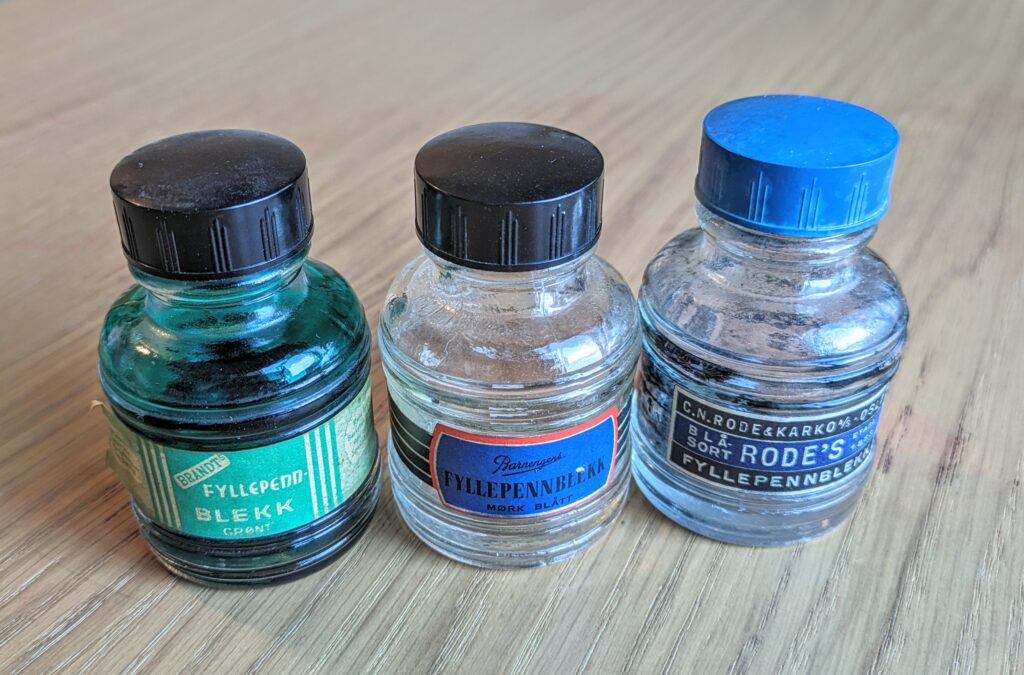
I went through most of this collection in greater detail in a similar post last year, and won’t repeat myself here, but I have a few new things that have come along since then that I’d like to mention specifically.
Last fall I finally managed to secure a few items from Den Norske Blyantfabrikk (The norwegian Pencil Factory)! First a slightly rusty metal box for storing pencils, and later two twelve-packs of pencils in the original boxes. These were new old stock and looked like they could have come fresh out of the factory just a few days before, so they were a great find. There seems to be quite a few people in Norway who collect things from the Norwegian pencil factories, so they tend to disappear very quickly when they appear in second-hand stores or online. I think I was quite lucky to be able to secure these.
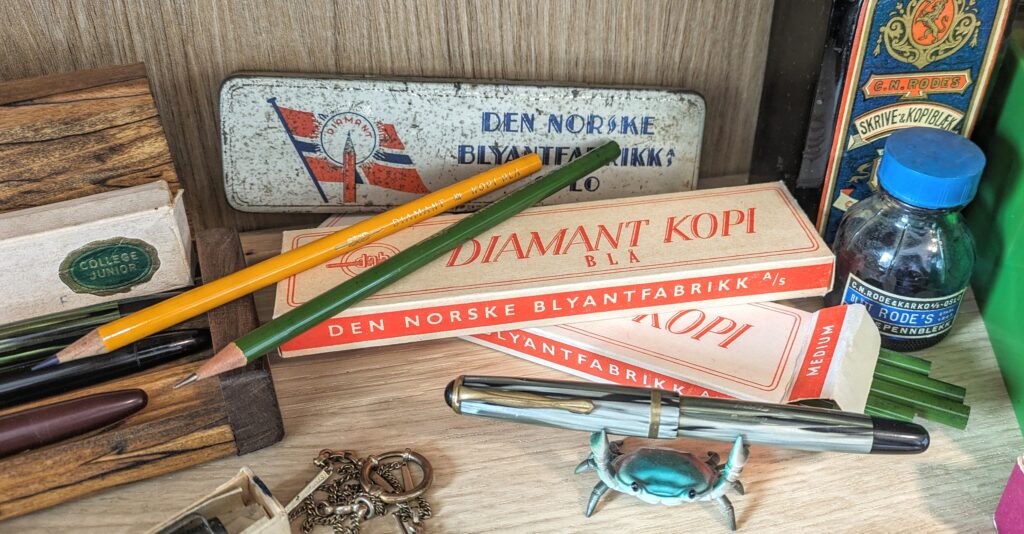
Another scoop I made last year was the green Pan box. Dealers of the Pan pens used to have boxes like this with extra nibs and other spare parts in them. When you bought a Pan school pen, you could choose from a number of different nibs, and then the dealers could quickly switch between the different variants.
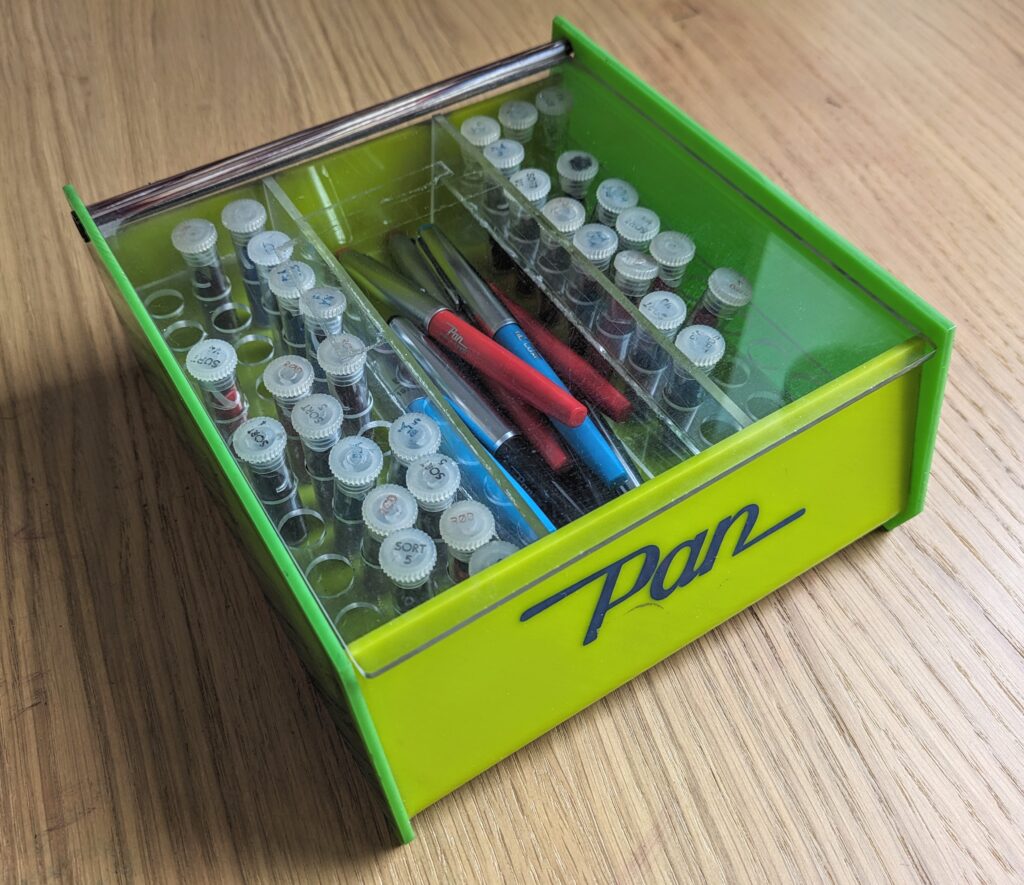
When I bought this Pan box last autumn, it came with a total of 29 nib sections for Pan school pens (with grip section, nib and feed, still in the original packaging), as well as a few other spare parts and a couple of complete school pens in exceptionally good condition. The box appeared on Finn.no (which is kind of like a Norwegian eBay or Craigslist) just as I was laying the finishing touches on my big article about the Pan pens, and I received it just in time to include a picture of it in the article. It was impeccable timing and really fun to be able to get hold of something like this. In many ways, it has become a focal point in my collection.
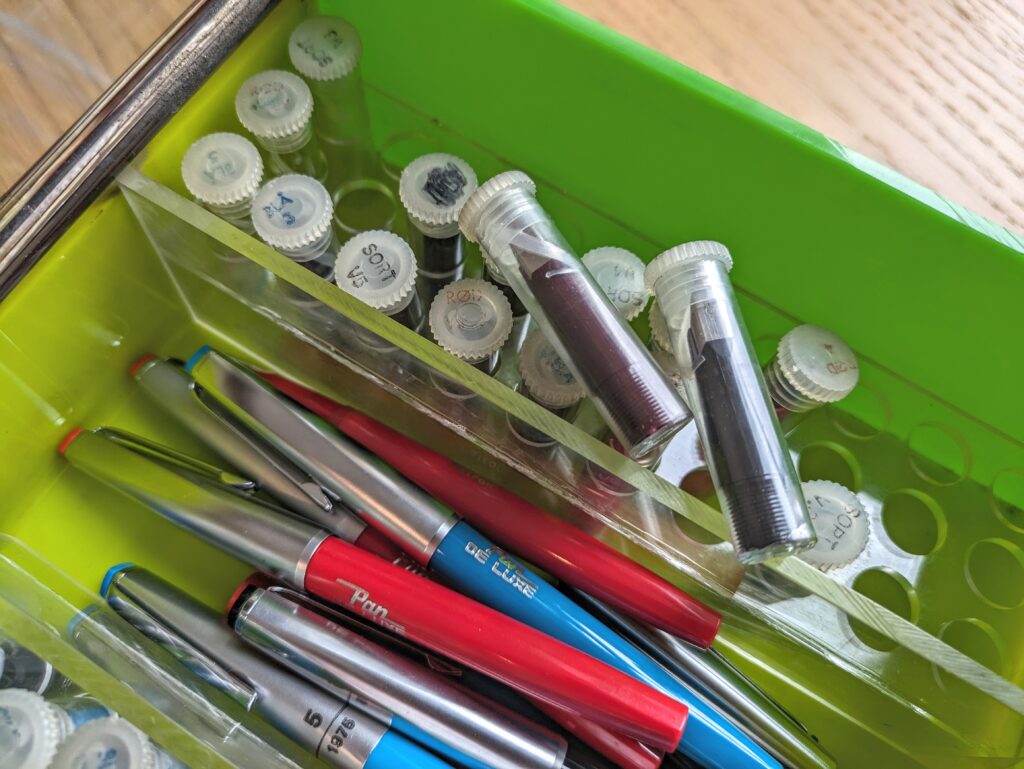
Well, then… I think I’ve been through most of it. When I’ve written similar posts in the past, I’ve often excluded my cheapo pens. I simply haven’t considered them part of my collection. But when I was planning this post, I decided it was time to realize that everything has to be included, no matter how insignificant I may think it is. 200 pens… That is quite a solid number. But is it enough? Naaah…